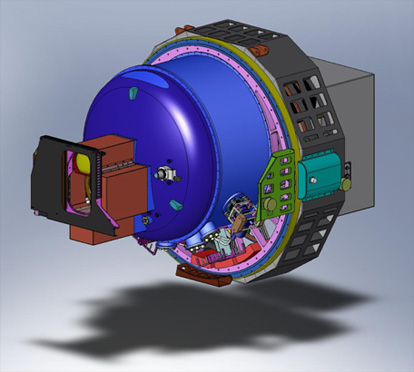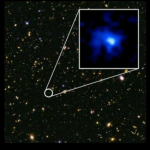Oct 27: Exploring the high redshift universe with MOSFIRE
 |
 |
 |
BUENAVENTURA IPS CHAPTER |
Exploring the high redshift universe with MOSFIRE
A unique infrared multi-object spectrograph for the world’s largest telescope
By Ian McLean, Ph.D.
Oct 27, 2017
6:30 pm (pizza and networking), 7 pm talk
California State University Channel Islands
One University Drive, Camarillo, CA 93012, Del Norte Hall, Room 1500
Meetings are free and open to the public (free parking set up for visitors near the presentation room)
RSVP at this link http://mosfire.eventbrite.com
 On April 4, 2012 a new in
On April 4, 2012 a new in strument obtained “first light” on the Keck 1 10-m telescope at the W. M. Keck
strument obtained “first light” on the Keck 1 10-m telescope at the W. M. Keck
Observatory on Mauna Kea, Hawaii. Known as MOSFIRE, for Multi-Object Spectrometer For Infra-Red Exploration, this much-anticipated machine provides an enormous boost in efficiency and sensitivity for infrared studies of very faint objects, especially when those objects have a high density on the sky, such as extremely distant galaxies. MOSFIRE was designed and developed by a team involving UCLA, Caltech, UC Santa Cruz, the Keck Observatory, and several industrial partners. What makes this large vacuum-cryogenic infrared spectrograph (and camera) unique is the ability to select up to 46 individual objects in a field of view of about 6 x 6 minutes of arc on the sky, and then record the near-infrared spectrum (1-2.5 microns, resolving power R~3500) of all 46 objects simultaneously. When a new field is selected, a robotic mechanism inside the cryogenic instrument reconfigures the distribution of slits in the focal plane in about five minutes. Dr. McLean will describe how MOSFIRE works, and explain some of the technical challenges that were overcome. He will also illustrate MOSFIRE’s performance with key results from four years of on-sky use, especially how this unique instrument has revolutionized our understanding of the evolution of galaxy formation 10 billion years ago in the early universe.
 Ian McLean, Ph.D. is Professor and Director, Infrared Laboratory for Astrophysics, Dept. Physics & Astronomy at UCLA. He is an Associate Director of the University of California Observatories. He served as Vice Chair for Astronomy at UCLA from 2009-2015, and was co-chair of the Keck Science Steering Committee from 2003-2007. He is the author of “Electronic Imaging in Astronomy,” published by Springer (2nd edition, 2008). Professor McLean was the Principle Investigator for two of the four infrared instruments at the Keck Observatory (NIRSPEC: 1999, and MOSFIRE: 2012).
Ian McLean, Ph.D. is Professor and Director, Infrared Laboratory for Astrophysics, Dept. Physics & Astronomy at UCLA. He is an Associate Director of the University of California Observatories. He served as Vice Chair for Astronomy at UCLA from 2009-2015, and was co-chair of the Keck Science Steering Committee from 2003-2007. He is the author of “Electronic Imaging in Astronomy,” published by Springer (2nd edition, 2008). Professor McLean was the Principle Investigator for two of the four infrared instruments at the Keck Observatory (NIRSPEC: 1999, and MOSFIRE: 2012).
